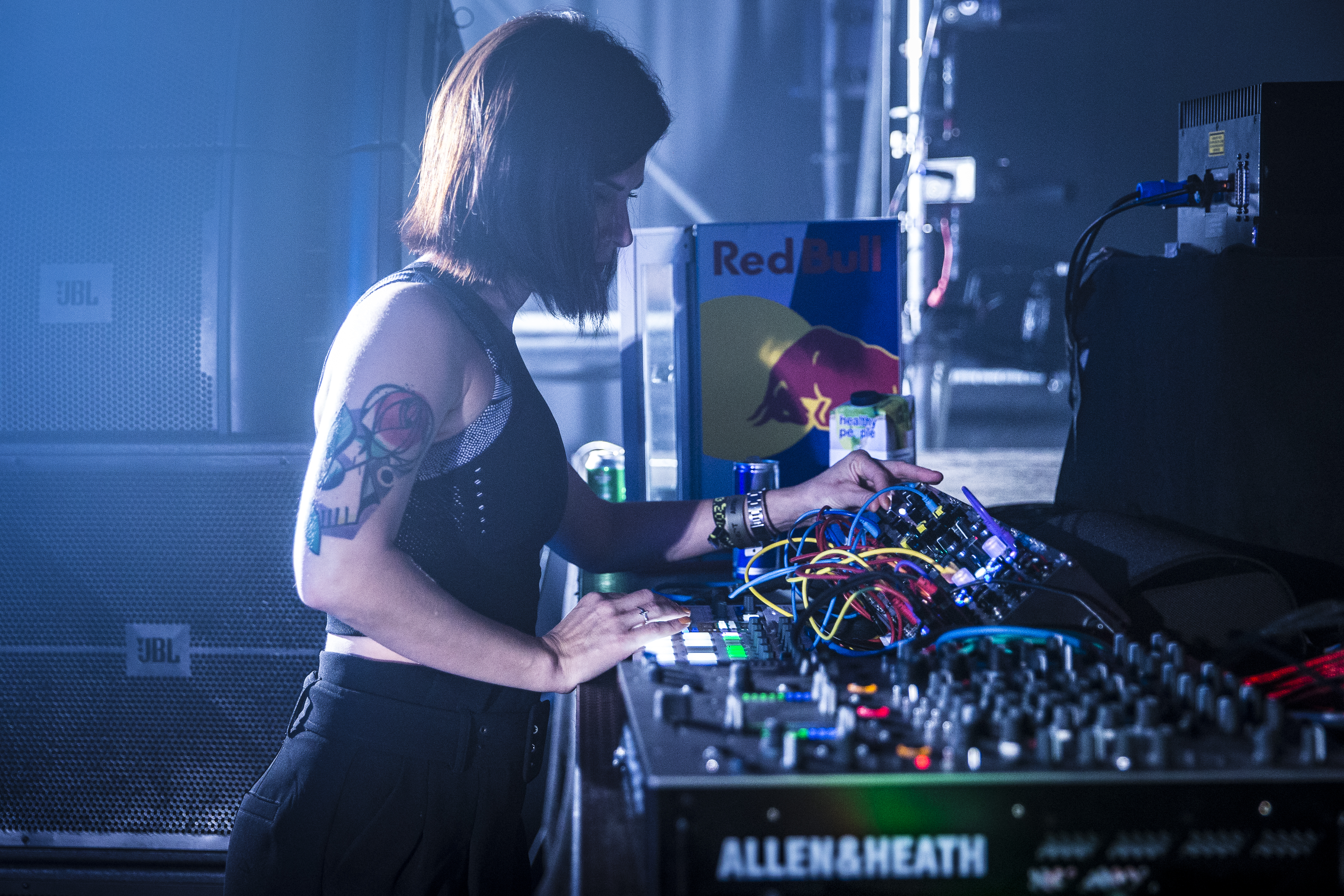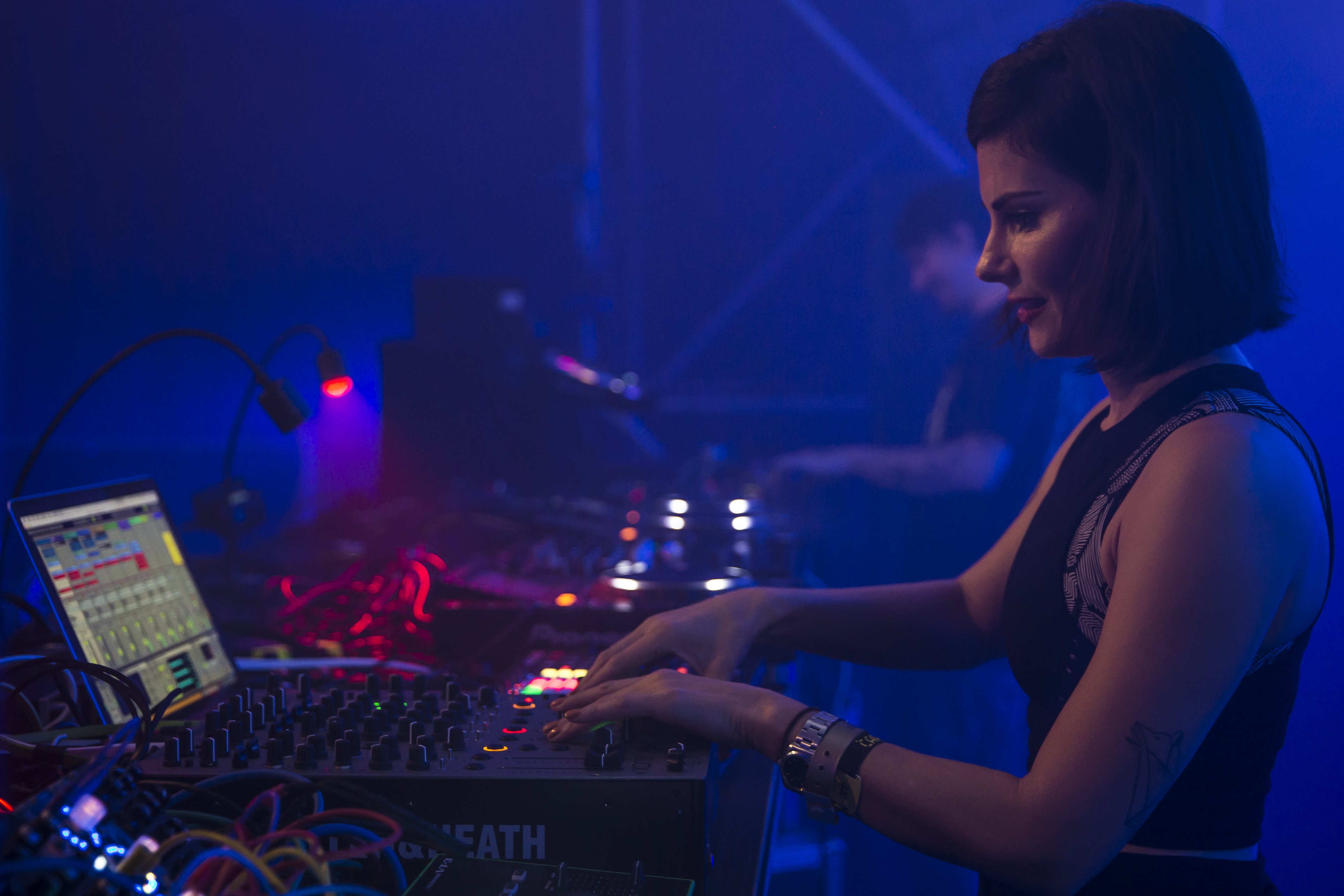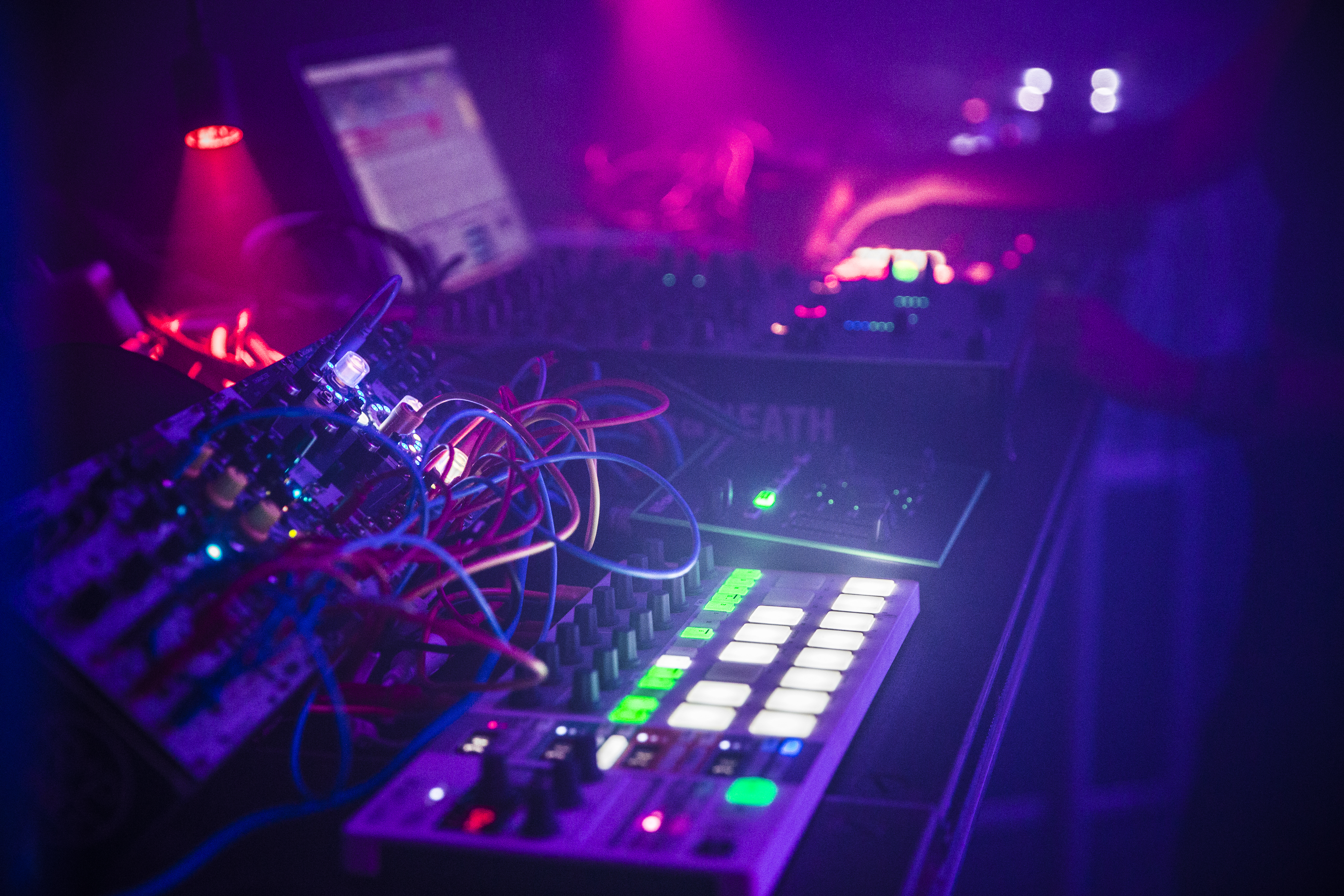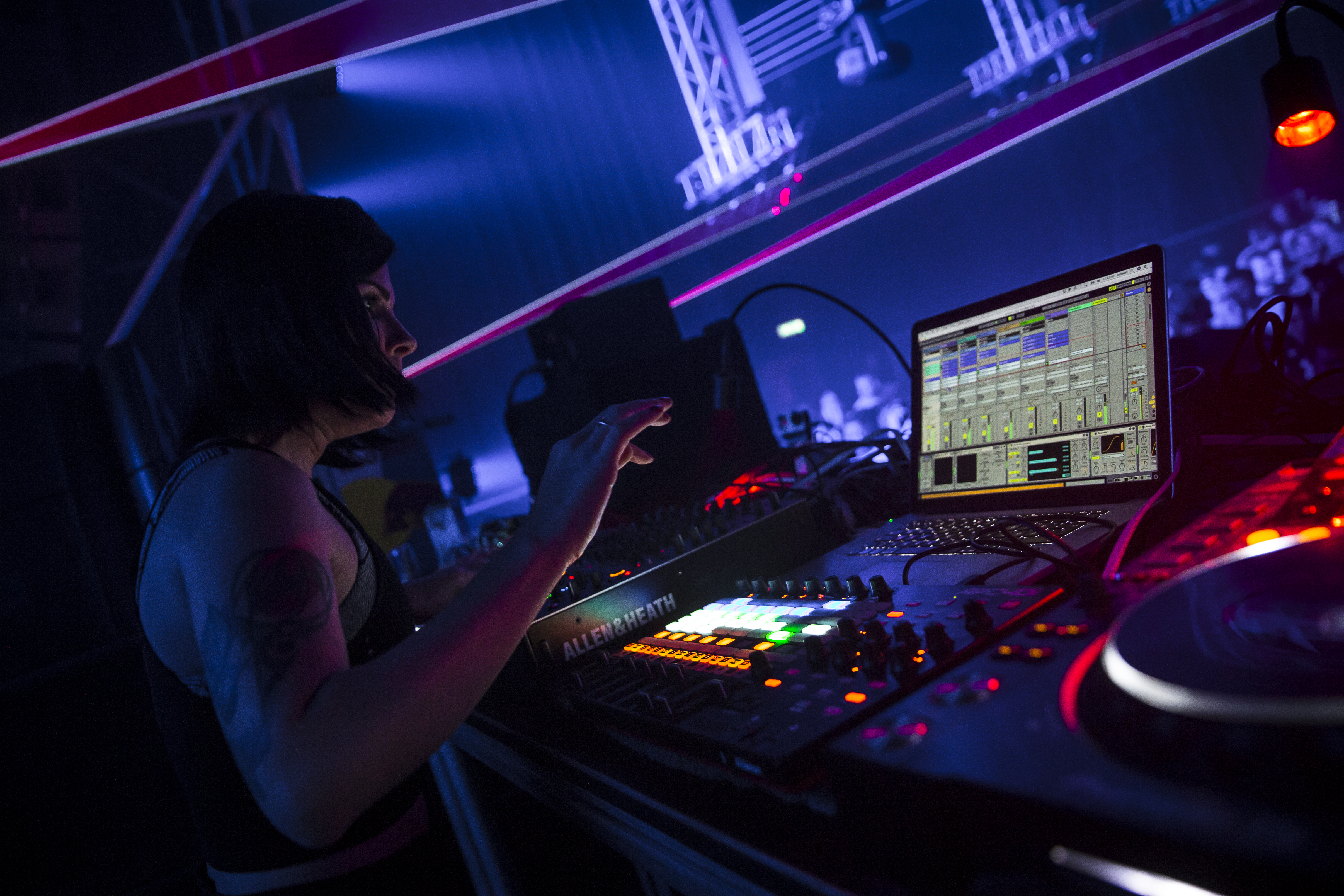Artist Tips: Rebekah
The UK techno artist details tips on how to build a live set.
Every artist, regardless of their discipline, needs to evolve. In fact, it is something inherent within creatives. The need to push the envelope, have new experiences, and share new impulses is deep rooted, and yearns to be nurtured. That is the position Rebekah found herself in during the early stages of 2016, inspiring a 2017 album debut on Soma Records, followed by a new hybrid live set tour at the heart of this and, more recently, a fully live set, debuted at 2018’s Amsterdam Dance Event. It was the culmination of over 20 years of experience dating back to 1996 when she began DJing in her hometown of Birmingham, United Kingdom, aged just 16 and drawing influence from the likes of Dave Clarke, Derrick Carter, Richie Hawtin, and Billy Nasty.
Since these modest beginnings, Rebekah has established herself as one of the leading exponents of techno currently operating on the global circuit. She began producing music in 2007 and made early inroads with EPs on Naked Lunch, Smut Music, and Cult Figures, before a remix of Matador’s “Blond Slackers” pricked the ears of Chris Liebing who invited Rebekah to do a podcast for his CLR series. Rebekah debuted on the label with 2013’s Cycles, a catalyst in her development, the success of which has driven her to become a label regular, performing at showcases and compiling a healthy discography thereon.
More recently, Rebekah debuted a new live set, giving up a Traktor hybrid setup in favour of Ableton Live and a small modular setup. After several months of preparation, Rebekah performed alongside Dasha Rush, SNTS, Ben Sims, and more, and then reached out XLR8R to go through the various important but so often overlooked considerations for when it comes to starting out as a live act. This is what she wished she had known.
You can stream and download Rebekah’s live set at the bottom of the feature.
My first live set was debuted at ADE this year and I have been inundated with questions on how I approached the process. In no way is this live set the finished article, there are also a few more things I have learned by listening back to the recording. The set in the end was pretty basic and I wanted it to be as close to a DJ set as possible and to really be able to have fun while performing it. The tips below are for the beginner on how to get started—they’re things I picked up from others as well as some stuff I worked out myself on how to tailor make the final setup.
1. Get very clear on what equipment to use. (The way you create music should dictate how you have your final setup.)
In the beginning, I wanted as much hardware as possible—a modular system, drum machine, hardware sequencer, and pedals galore—but I had to get real with myself, because I don’t create music fully this way. I create music with a mix of hardware and software: Logic is my sequencer and I dabble a bit with Ableton so the next question would be how to adapt what I do to make music to the stage, where I would then be able to perform it. I opted for Ableton Live, so I could breakdown my tracks into loops and trigger them and effect them. The hardware would come in the shape of a small modular 6U set up.
As a DJ, I also wanted the process of playing live to mirror what I do, which is using up-faders, so my choice of the Akai APC 40mk2 controller was a no brainer; triggering loops and throwing them into the mix gave me the right amount of control to express my energy through the live set. Other popular choices of controllers would be the Push 2 and the iconic Evolution UC33, which has now been discontinued, but you may be able to pick one up second hand.
If removing the laptop altogether is what you’re interested in then there is a great selection of hardware sequencers on the market, the most popular being Elektron’s Octatrack, but I have heard of a few issues with overall sound quality. The latest sequencer that people have been raving about is the Dave Smith and Pioneer’s Toriaz collaboration. It features a touch screen display making it one of the easiest sequencers to use and arguably one of the best sounding, and Dave Smith’s analogue filters and a nifty overdrive will help decimate your samples in a live set.


02. Preparation is key
Most of my time leading up to the live performance was spent on choosing loops and sections of my tracks to incorporate into the set—a breakbeat part, a melodic part, a ’90s techno part, industrial, and so forth. This helps your brain organize things into sections as it can be really overwhelming otherwise. You should also have an intro and an outro. You can get really organized in the Scene window of Ableton: utilize the colors to indicate different instruments or parts, have an order of where you want to go, preferably from top of the screen to the bottom. It’s totally customizable.
Also, make sure you have enough material. What I hadn’t planned on was that 25 minutes in I had pretty much worked through all of my sections in Ableton; nerves can really get the better of you as you start firing through your live set. If this happens, head back to the start of the Scene window where you will find loops and parts that you have missed and, if using hardware, you can always use this more too; for me this was actually a good thing as it forced me to take more risks during the set. The main take away here is to have double the amount of material.
03. Processed kicks will be better when playing before or after DJs
This is a well-known secret when performing live between DJ sets. Usually the live set will not have the same power or amplitude as a DJ set and this comes down to the processing of kicks and final mastering of the tracks that DJs play.
To overcome this, choose the strongest kicks in your arsenal. It’s a good idea to jam with them and then weed out the weaker ones; preferably you should be left with six really strong kicks. If using Ableton and your own kicks, try a multi-band compressor and some saturation on the kick channel; this gives the kicks broader dynamics so that they really gel together.
If you are planning on using a drum machine, learn the settings to take your kick through a few changes using the attack/decay and overdrive, because an hour of the same kick might be a little boring to the listener, but these few tricks will make that kick sound different throughout the set and keep it interesting.


4. The hardware will need some special attention.
The live elements of my set came from a very basic modular setup that I could use for extra percussion and to give more of a ’90s feel. The initial patch had the pitch from the sequencer controlling the two oscillators in my modular and this proved to be very unpredictable with key clashes with my parts in Ableton. I opted to take this out and just run the gate out instead and then be able to change the pitch manually if I desired directly with the oscillators. This was way easier on the ear.
Make sure that everything is balanced. Listening back to the set, the modular is a lot louder than Ableton, and so for my future shows I will be investing in an external hardware compressor to place before the final master out. At the budget end, try FMR’s Really Nice Compressor, and at the top end the Neve 5043, or both in the case of Octave One! Find one that fits your budget.
5. Effects, effects, effects
Once you have decided on your setup you’re going to want to choose some effects to play with. Try a beat repeater on your kicks and be able to trigger this to create double beats and break up a 4/4 work flow; also, a subtle rhythmic filter on mid frequency musical segments will allow for some slight movement making loops less static, and if you’re planning big breakdowns you will need some extra effects: filters, delays, and reverb will add to the intensity.
A lot of hardware has built in effects for hands on tweaking, but you can also utilize the desk or mixer you’re planning on using with the send and return options, making pedals a good addition to your set up.
5. Sync or Midi?
The hardware and software needs to talk to one another and be fully in time: the last thing you want during a live set is drift and this was the hardest thing for me to figure out yet in theory the simplest. I tried my hardest to use USB sync, and my Traktor setup with the modular syncs but Ableton was another story. I was recommended to buy the E-RM Multiclock which is a pretty neat piece of gear that allows you to send an internal MIDI clock to all of your hardware keeping everything in time or you can use an external MIDI clock from Ableton to then send to your gear. Bear in mind that you have to carry all your gear so check your soundcard to see if this has a MIDI out—most do—as this will save you space in the long run. If things aren’t working with MIDI, check your cables as these break really easily; and if opting for USB, this can work well when the synthesizers or controllers are directly connected to the laptop rather than via a hub.
Summary
A lot of time and patience is needed to get started and if I knew these tips before I started things would have been smoother sailing and I would have had less time wasted. The main thing is to practice enough to be comfortable, its nerve wracking at first but once that subsides it allows a new kind of freedom with performance, totally different from DJing. Enjoy and good luck!
Due to issues regarding the GDPR, EU readers can download the live set here.

